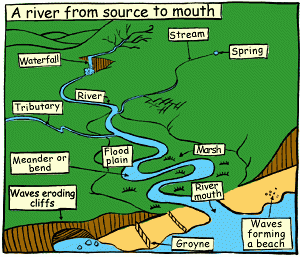A river starts with a source. I started this course with some background knowledge in Educational studies from SFU. I have had many life experiences that also contribute to my learning.
I am using the ‘river’ metaphor for my learning during this Education 405 semester. I chose this metaphor for several reasons. A river has lots of change, it is fluid, it has many influences that cause it to change. The river has an impact on others. My learning is constantly changing. I am being motivated and engaged both internally and externally.
Nakkula, M.J. & Toshalis, E. (2005). “The construction of adolescence”, “Flow and Possibility Development” In Understanding Youth: Adolescent Development for Educators Boston: Harvard University Press. 1-16, 61-77.
Reciprocal coauthorship
pg 13 “While it is common for teachers to exalt the power they possess to shape their students’ self-understandings, the reverse is equally true. Students shape teachers’ self-understandings as well.”
Through feedback from our students we can learn how to teach.
pg 14 “authentic mind-to-mind connections forged through interactive learning processes not only create the cognitive linkages essential to student development but also nurture the personal and professional identity of educators”
Reciprocal transformation pg 14 “ Growing and learning through relationships brings change in both directions.”
Larrivee, B. (1999). Authentic classroom management: Creating a community of learners. Massachusetts: Allyn & Bacon.
What does being an authentic teacher mean?
pg. 86 “Teachers who are authentic do not act out assumed roles or roles others expect them to play. They know who they are and are clear about what they stand for. They have let down their masks and disguises. Authentic teachers “walk the talk”
- use appropriate self-disclosure (consider context, judgement call (involves the ability to assess the depth of the disclosure)
- validate their right to the feelings they experience, are honest, sharing encourage making mistakes creating a safe environment for students to be authentic
- exude self-acceptance and self-confidence to then inspire in students
“being open and accepting of students and encouraging students to express a variety of feelings and opinions helps develop a sense of connectedness and emotional intelligence.”
“connecting skills of validating, self-disclosing, and accepting personal ownership and responsibility”
